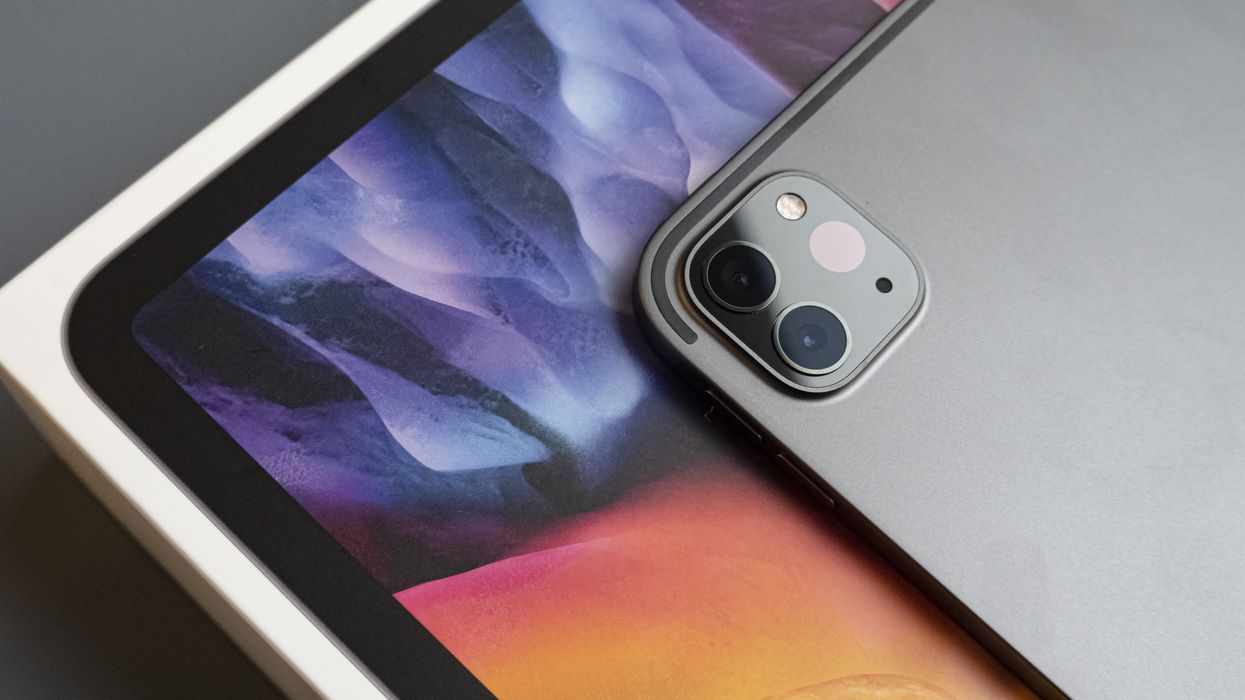Apple's next iPad Pro could double number of cameras for a picture-perfect upgrade

GETTY IMAGES
|The next iPad Pro model is expected to feature two front-facing cameras
Video calls could see an upgrade with the next iPad hardware
- Next iPad Pro could feature twice as many front-facing cameras
- Rumoured setup would enable standard and wide-angle selfie shots
- iPad tipped to switch cameras based on how you hold the tablet
- Upgrade could improve quality of video calls on WhatsApp and FaceTime
- iPad Pro with M5 could release as soon as October
Don't Miss
Most Read
Latest
If you're eagerly anticipating the next iPad Pro, you'll be pleased to learn that the US company is preparing to level-up your photography game via two crucial new camera enhancements.
The upcoming iPad could incorporate two front-facing cameras — one positioned along the top edge for portrait use and another on the longer side to use in landscape orientation. According to Bloomberg's reliable tipster Mark Gurman, doubling the number of cameras on the front of the tablet will ensure you can also enjoy the best angle in video calls, selfies, and Face ID authentication, whether you're holding your tablet vertically or horizontally.
If accurate, the rumoured dual-camera approach would solve a dilemma that emerged when Apple relocated the front-facing FaceTime camera to the landscape side of the tablet in the M4-powered iPad Pro launched last year. While this change massively benefited those who use their tablets in landscape for laptop-like work or video calls, it left portrait-mode enthusiasts at a disadvantage, since it's possible for your hand to cover the lens.
The shake-up to the front-facing camera was found on both 11-inch and 13-inch variants.

APPLE PRESS OFFICE
|When held in landscape during a video call, the selfie camera is in the perfect position in the middle of the border
Rather than returning to the previous camera setup, Apple will reportedly incorporate both. The upcoming devices tipped to automatically select the right camera based on how you're currently holding your iPad— taking out the guesswork and ensuring you're always perfectly framed for video calls or Face ID facial recognition. This dual-camera system means you won't need to worry about accidentally covering the lens with your hands, either.
We'd expect its Centre Stage feature, which intelligently frames you (and anyone else on the call) so you're always in the ideal position even as you move around during video calls, to make a return on the next iPad Pro too.
Beyond the camera enhancement, the new iPad Pro is expected to a speedier M5 system-on-a-chip, which is an upgrade from the M4 chip used in prior models. Tipster Mark Gurman suggests that you can expect the new iPad Pro to arrive towards the end of the year, with October emerging as a likely launch window. You'll have the choice between 11-inch and 13-inch models, maintaining the size options already available with current models.
However, supply chain analyst Ming-Chi Kuo suggests mass production might not commence until the second half of 2025, though Apple could still announce the devices earlier in line with their typical 18-month refresh cycle for the iPad Pro range.
If you're planning to upgrade, you should note that the new models will continue to support Apple's extensive accessory lineup, including the Magic Keyboard, allowing the tablet to function more like a traditional laptop when needed.

APPLE PRESS OFFICE
|If you use accessories like the Magic Keyboard, the position of the FaceTime camera is perfect for calls in a landscape orientation
The M4 version already delivered significant aesthetic improvements, including an ultra-thin frame at just 5.1 millimetres thick, earning it the accolade of the thinnest device to ever leave Apple's R&D department. It also swapped to a high-quality OLED display for the first time. OLED, which is already found on the iPhone and Apple Watch, offers more vibrant colours and deeper shades of black. Because of the way OLED panels illuminate each pixel, Dark Mode and other interfaces that predominantly use black elements will use less battery life too.
Apple says it's using a new technology called "tandem OLED" to boost the brightness — one of the weaknesses of this display technology compared to the Mini LED that it replaced on the previous, sixth-generation iPad Pro — up to 1,000-nits of peak full-screen brightness.
 APPLE PRESS | iPadOS 26 is set to release in September, ahead of the new iPad Pro release expected in October
APPLE PRESS | iPadOS 26 is set to release in September, ahead of the new iPad Pro release expected in OctoberLATEST DEVELOPMENTS
- Google is finally fixing your Gmail inbox with this free upgrade
- O2 forges ahead with 3G shutdown
- Best Sky Glass deals
- Millions of Brits could save £250 on broadband with one phone call
This new screen, which Apple has branded as "Ultra Retina XDR", can max out at 1,600-nits in brightness when watching HDR content. That's about what you'd expect from a top-of-the-line Samsung TV too and should mean the tablet screen remains easily visible when using it outdoors.
If you really want to eliminate glare, Apple is offering the same nano-texture coating available on its external display that it says will maintain the same image quality and contrast while scattering ambient light for reduced reflections when working in direct light.
The forthcoming iPadOS 26, which is Apple's next major update to its operating system, is expected in September ahead of the new iPad's launch. The new system is set to complement these upcoming hardware improvements with fresh software features, potentially maximising the utility of the dual-camera setup through enhanced video calling and creative applications.










